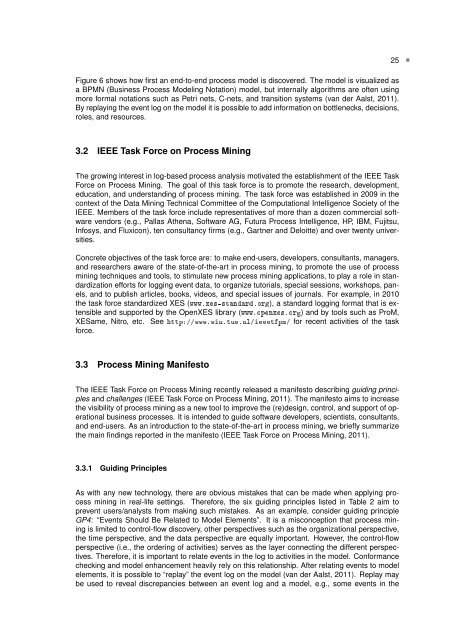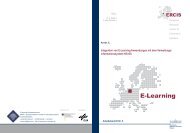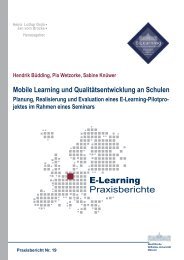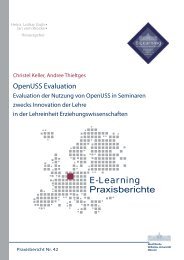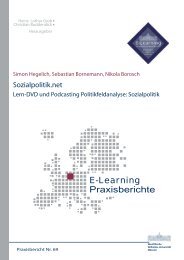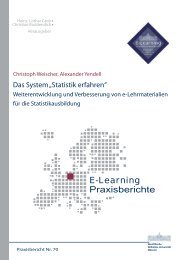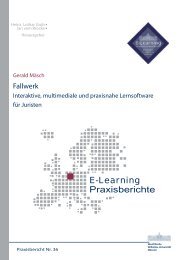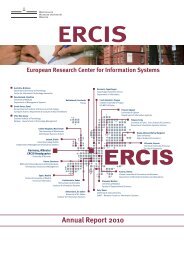Promoting Business Process Management Excellence in Russia
Promoting Business Process Management Excellence in Russia
Promoting Business Process Management Excellence in Russia
You also want an ePaper? Increase the reach of your titles
YUMPU automatically turns print PDFs into web optimized ePapers that Google loves.
25<br />
<br />
Figure 6 shows how first an end-to-end process model is discovered. The model is visualized as<br />
a BPMN (<strong>Bus<strong>in</strong>ess</strong> <strong>Process</strong> Model<strong>in</strong>g Notation) model, but <strong>in</strong>ternally algorithms are often us<strong>in</strong>g<br />
more formal notations such as Petri nets, C-nets, and transition systems (van der Aalst, 2011).<br />
By replay<strong>in</strong>g the event log on the model it is possible to add <strong>in</strong>formation on bottlenecks, decisions,<br />
roles, and resources.<br />
3.2 IEEE Task Force on <strong>Process</strong> M<strong>in</strong><strong>in</strong>g<br />
The grow<strong>in</strong>g <strong>in</strong>terest <strong>in</strong> log-based process analysis motivated the establishment of the IEEE Task<br />
Force on <strong>Process</strong> M<strong>in</strong><strong>in</strong>g. The goal of this task force is to promote the research, development,<br />
education, and understand<strong>in</strong>g of process m<strong>in</strong><strong>in</strong>g. The task force was established <strong>in</strong> 2009 <strong>in</strong> the<br />
context of the Data M<strong>in</strong><strong>in</strong>g Technical Committee of the Computational Intelligence Society of the<br />
IEEE. Members of the task force <strong>in</strong>clude representatives of more than a dozen commercial software<br />
vendors (e.g., Pallas Athena, Software AG, Futura <strong>Process</strong> Intelligence, HP, IBM, Fujitsu,<br />
Infosys, and Fluxicon), ten consultancy firms (e.g., Gartner and Deloitte) and over twenty universities.<br />
Concrete objectives of the task force are: to make end-users, developers, consultants, managers,<br />
and researchers aware of the state-of-the-art <strong>in</strong> process m<strong>in</strong><strong>in</strong>g, to promote the use of process<br />
m<strong>in</strong><strong>in</strong>g techniques and tools, to stimulate new process m<strong>in</strong><strong>in</strong>g applications, to play a role <strong>in</strong> standardization<br />
efforts for logg<strong>in</strong>g event data, to organize tutorials, special sessions, workshops, panels,<br />
and to publish articles, books, videos, and special issues of journals. For example, <strong>in</strong> 2010<br />
the task force standardized XES (www.xes-standard.org), a standard logg<strong>in</strong>g format that is extensible<br />
and supported by the OpenXES library (www.openxes.org) and by tools such as ProM,<br />
XESame, Nitro, etc. See http://www.w<strong>in</strong>.tue.nl/ieeetfpm/ for recent activities of the task<br />
force.<br />
3.3 <strong>Process</strong> M<strong>in</strong><strong>in</strong>g Manifesto<br />
The IEEE Task Force on <strong>Process</strong> M<strong>in</strong><strong>in</strong>g recently released a manifesto describ<strong>in</strong>g guid<strong>in</strong>g pr<strong>in</strong>ciples<br />
and challenges (IEEE Task Force on <strong>Process</strong> M<strong>in</strong><strong>in</strong>g, 2011). The manifesto aims to <strong>in</strong>crease<br />
the visibility of process m<strong>in</strong><strong>in</strong>g as a new tool to improve the (re)design, control, and support of operational<br />
bus<strong>in</strong>ess processes. It is <strong>in</strong>tended to guide software developers, scientists, consultants,<br />
and end-users. As an <strong>in</strong>troduction to the state-of-the-art <strong>in</strong> process m<strong>in</strong><strong>in</strong>g, we briefly summarize<br />
the ma<strong>in</strong> f<strong>in</strong>d<strong>in</strong>gs reported <strong>in</strong> the manifesto (IEEE Task Force on <strong>Process</strong> M<strong>in</strong><strong>in</strong>g, 2011).<br />
3.3.1 Guid<strong>in</strong>g Pr<strong>in</strong>ciples<br />
As with any new technology, there are obvious mistakes that can be made when apply<strong>in</strong>g process<br />
m<strong>in</strong><strong>in</strong>g <strong>in</strong> real-life sett<strong>in</strong>gs. Therefore, the six guid<strong>in</strong>g pr<strong>in</strong>ciples listed <strong>in</strong> Table 2 aim to<br />
prevent users/analysts from mak<strong>in</strong>g such mistakes. As an example, consider guid<strong>in</strong>g pr<strong>in</strong>ciple<br />
GP4: “Events Should Be Related to Model Elements”. It is a misconception that process m<strong>in</strong><strong>in</strong>g<br />
is limited to control-flow discovery, other perspectives such as the organizational perspective,<br />
the time perspective, and the data perspective are equally important. However, the control-flow<br />
perspective (i.e., the order<strong>in</strong>g of activities) serves as the layer connect<strong>in</strong>g the different perspectives.<br />
Therefore, it is important to relate events <strong>in</strong> the log to activities <strong>in</strong> the model. Conformance<br />
check<strong>in</strong>g and model enhancement heavily rely on this relationship. After relat<strong>in</strong>g events to model<br />
elements, it is possible to “replay” the event log on the model (van der Aalst, 2011). Replay may<br />
be used to reveal discrepancies between an event log and a model, e.g., some events <strong>in</strong> the


